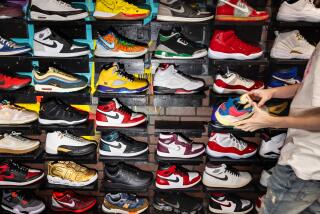Amid Limited Supply, Some Forge On
ISTANBUL, Turkey — Competition among dealers, museum curators and collectors has driven prices for the best Oriental carpets into the six and seven figures.
“At the very top, supply is very limited, prices are very high, and if anything good comes to the market, it’s usually bought privately without ever being seen,” said Daniel Shaffer, executive editor of Hali magazine, the glossy, London-based bible for the trade.
Stratospheric prices at the high end have affected lower-priced carpets as well, particularly colorful tribal rugs from Turkey and the neighboring Caucasus region. Depending on age, rarity and condition, good-quality rugs once available for a few hundred dollars routinely fetch anywhere from $5,000 to $20,000 in Istanbul, London, Berlin and New York.
Rugs in that price range are growing scarce as well, leading to a booming market in high-quality fakes in the last six to eight years. Many counterfeits are so good that they are undetectable to all but the most accomplished connoisseurs, although they too have been fooled.
The rug trade has always had a reputation for roguery.
The acknowledged master forger was a Romanian named Theodor Tuduc, whose copies of Ottoman court carpets in the early 20th century are said to have fooled museum curators and even the owners of the original carpets. Today, Tuducs are collector’s items in their own right, a sort of genuine fake.
The new generation of phonies come from the basements of Istanbul carpet stores and workshops hidden away in Anatolian villages. They unerringly mimic the designs, colors and dimensions of masterpieces. They look and feel old partly because they are woven on old foundations from wool harvested from damaged old flat-weave rugs known as kilims.
Faux aging also is achieved through tricks such as staining the rugs with animal urine, baking them under the sun and leaving them on dusty roads to be run over by cars and carts, in an effort to replicate the grime of decades. Tea baths produce a patina of wear; milk baths enhance the luster of wool.
It is hard work, done with care over months, but the payoff can be enormous. An assiduously turned-out replica of a Konya long carpet or a Bergama prayer rug might require $500 worth of labor and material but bring 10 or 20 times as much from an unsuspecting buyer.
“It is very difficult for ordinary collectors to distinguish the fake from the authentic, and even some auction houses don’t get the difference and put these carpets in their catalogs,” Mehmet Cetinkaya, a prominent Istanbul dealer, said.
Pricing antique rugs is subjective, even in honest shops. New carpets are sold by the square meter, but when it comes to old ones, the best advice from reputable dealers is straightforward: Buy with your eyes, not your ears. Go with what you can see and feel. And, of course, caveat emptor.
More to Read
Sign up for Essential California
The most important California stories and recommendations in your inbox every morning.
You may occasionally receive promotional content from the Los Angeles Times.









